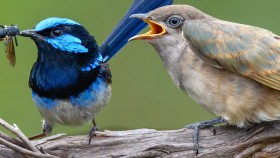Helen Bothwell
Research Background
I fell in love with macrosystems ecology as an undergrad at the University of Wisconsin – Madison, where I worked in the Lindroth Chemical Ecology & Entomology Lab investigating how continental-scale patterns of fire history and herbivorous browsing interact to influence the biogeography of chemical defense in forest trees across Canada. As a PhD student and later post doc at Northern Arizona University, my fascination with understanding the links between micro- and macroscale ecological processes continued. My research utilized a genes to ecosystems approach to investigate how past and present landscape and climatic factors have shaped spatial genetic structure and gene flow in foundation tree species across western North America. I also developed landscape genetic prediction models to assist land managers in preparing for future climate change impacts within National Parks. In 2017, I took a fun detour to the animal world and joined an international team of scientists from Arizona, Oxford, Borneo, Sumatra, and Southeast Asia as a statistical consultant, working to develop habitat suitability models for conservation of threatened clouded leopards. In the spring of 2018, I made the big leap across the Pacific to join the Borevitz Lab. While here, I’m working on a DECRA project investigating landscape genomics of drought adaptation in eucalyptus.
Current Research Interests
Above all, my research is motivated by a drive to contribute concrete, practical solutions for conservation genetic management of our world’s forests. Over the course of my research career, we have rapidly accelerated from studies using a handful of markers to whole genome sequences. At the same time, spatial statistical modeling has seen its own revolution in high performance computing power, high-resolution geospatial datasets, and a wealth of creative and exciting modeling tools. I work at the intersection of these fields, using GIS and spatial modeling to understand what ecological and evolutionary processes have contributed to the spatial distribution of species and adaptive genomic variation across the landscape. A perpetual challenge is building better models that reduce sources of uncertainty, thereby reducing risks associated with management decisions. My current work is digging under the surface to investigate variation in root growth and drought adaptation strategies in southeast Australian eucalyptus species. In collaboration with local land managers, I look forward to translating this basic research into identification of optimal restoration stock for rebuilding climate-resilient forests.
What I enjoy most about research
I feel fortunate to spend my days tackling new challenges that fascinate and inspire me – as researchers we never stop learning. As a forest ecologist, I’ve also had the pleasure of doing fieldwork and camping in some of the most beautiful and remote corners of the American West. I’m grateful for the time spent gaining an intimate knowledge of that vast and beautiful landscape, for exploring quiet places where few others have ever set foot, and for being able to contribute to its conservation. As much as conservation work is place-based, being a spatial modeler has afforded global opportunities to work with scientists all over the world. It’s exciting living in a digital age where we can work collaboratively on coding with partners in Poland, write manuscripts with co-authors in Bhutan, and develop grants with Aussie collaborators, all in the same day from a laptop anywhere in the world. Now more than any other time in history, we have the capacity to bring together great minds to solve big challenges.







